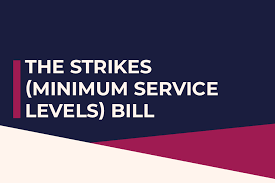Employment law in Canada
Employment Law in Canada is governed by a combination of federal and provincial/territorial laws, which vary depending on the jurisdiction and nature of the employment. The legal framework is designed to protect workers' rights, regulate employer responsibilities, and ensure fair treatment in the workplace. Below is an overview of the key aspects of employment law in Canada.
1. Key Legislation and Legal Framework
Federal vs Provincial Jurisdictions: In Canada, employment law can be governed by either federal or provincial law.
Federal Jurisdiction: Applies to federal employers, such as banks, telecommunications companies, and inter-provincial transportation companies. Federal employment laws are primarily governed by the Canada Labour Code (CLC).
Provincial and Territorial Jurisdiction: Employment laws for most employees are governed by provincial and territorial legislation. Key examples include the Ontario Employment Standards Act, British Columbia Employment Standards Act, and the Quebec Labour Standards Act.
Human Rights Legislation: The Canadian Human Rights Act (CHRA) and provincial human rights codes prohibit discrimination based on factors such as race, gender, disability, sexual orientation, and more. These laws provide a framework for addressing discrimination and harassment in the workplace.
Occupational Health and Safety: Each jurisdiction has specific laws governing occupational health and safety to ensure that workplaces are safe for employees. These laws require employers to maintain safe working conditions, provide training, and implement safety protocols.
2. Employment Contracts
Employment Agreement: While written contracts are not mandatory, it is strongly recommended for both employers and employees to have a written employment contract outlining the terms of employment. This includes job duties, compensation, work hours, and other key terms. Verbal agreements are legally binding but can be harder to enforce in disputes.
Fixed-Term vs Indefinite Contracts: Employees can be hired under a fixed-term contract, which has a specified end date, or an indefinite contract, which does not. In most cases, an indefinite contract is the standard.
Probation Period: Employers may implement a probationary period (usually between 3 to 6 months), during which either party can terminate the contract with minimal notice and without providing severance. Probation periods allow both parties to evaluate the employment relationship.
3. Working Hours and Overtime
Standard Working Hours: The standard workweek in Canada is generally 40 hours (typically 8 hours per day). However, this can vary by jurisdiction and industry. Some sectors, such as healthcare, may have different regulations governing hours of work.
Overtime: In Canada, employees are entitled to overtime pay for hours worked beyond the standard workweek, which is usually more than 8 hours per day or 40 hours per week.
Overtime Rate: Overtime pay is typically 1.5 times the regular hourly wage (time and a half). Some industries or collective agreements may provide higher rates.
Rest Periods: Employees are entitled to a rest period of at least 30 minutes after 5 consecutive hours of work, but this can vary depending on the jurisdiction and nature of the work.
4. Wages and Compensation
Minimum Wage: Canada has a national minimum wage, but it varies by province or territory. For example, in Ontario, the minimum wage is different from the one in British Columbia. Each province sets its own minimum wage rate, and these rates are regularly updated.
Federal Minimum Wage: As of 2025, the federal minimum wage in Canada is $15 per hour, but many provinces set their own rates, which can be higher than the federal rate.
Payment of Wages: Employers must pay employees at least the minimum wage and ensure that wages are paid on time. The frequency of payments (weekly, bi-weekly, or monthly) depends on the employment contract and jurisdiction.
Deductions: Employers may make deductions from an employee's wages for statutory purposes, such as income tax, Canada Pension Plan (CPP) contributions, and Employment Insurance (EI) premiums. Employers must also make sure to pay employee benefits if applicable, such as pension contributions or health benefits.
5. Leave and Holidays
Annual Leave: In most provinces, employees are entitled to a minimum of 2 weeks of paid vacation after 1 year of employment. After 5 years of employment, employees are entitled to 3 weeks of vacation. These entitlements may vary based on the jurisdiction.
Public Holidays: Employees are entitled to paid time off on statutory holidays such as Canada Day, Thanksgiving, New Year’s Day, and Victoria Day. If an employee works on a public holiday, they are typically entitled to overtime pay (usually double time or time and a half, depending on the province).
Sick Leave: Employees are generally entitled to sick leave, although this can vary by province. Some provinces provide paid sick leave, while others require employees to take unpaid leave. Employees may also have access to short-term disability insurance or employment insurance if they are unable to work due to illness.
Maternity, Parental, and Family Leave:
Maternity Leave: Female employees are entitled to up to 15 weeks of unpaid maternity leave, which can begin up to 12 weeks before the expected delivery date. This period is extended in some provinces.
Parental Leave: Parents (including fathers) are entitled to up to 61 weeks of parental leave, which can be taken by either parent or shared. In certain provinces, the leave may be paid through government programs such as Employment Insurance (EI), which provides a percentage of the employee’s wage.
Family Care Leave: Employees are also entitled to leave to care for sick family members, though the specifics may vary by province.
6. Health and Safety
Occupational Health and Safety (OHS): Employers are legally required to provide a safe working environment under federal and provincial laws. This includes implementing safety measures, providing personal protective equipment (PPE), and ensuring workers are trained to handle potential hazards.
Workplace Injuries: Employees who are injured at work may be entitled to compensation under provincial workers’ compensation programs. These programs cover medical expenses, lost wages, and rehabilitation costs.
Workplace Safety Inspections: Canadian workers have the right to report unsafe conditions without fear of retaliation. Provincial and federal governments conduct workplace safety inspections to ensure employers are complying with health and safety regulations.
7. Termination of Employment
Termination for Cause: Employers can terminate employees for cause without notice or severance pay if the employee engages in misconduct, such as theft, fraud, or gross negligence. However, this is difficult to prove, and employees are often entitled to compensation unless the misconduct is clear and substantial.
Termination Without Cause: In most cases, employees who are terminated without cause are entitled to notice or severance pay. The length of the notice period or severance pay is typically based on:
Length of service.
The nature of the position.
The age of the employee.
Notice Period: The standard notice period is:
1 week for employees with less than 1 year of service.
2 weeks for 1 to 3 years of service.
3 weeks for 3 to 5 years of service.
4 weeks for 5 years or more.
Severance Pay: In cases of termination without cause, employees may receive severance pay, which is calculated based on their years of service and salary.
8. Anti-Discrimination and Equality
Non-Discrimination: Canadian employment law prohibits discrimination in the workplace based on race, religion, gender, sexual orientation, disability, and other protected categories under the Canadian Human Rights Act (CHRA) and provincial human rights legislation.
Harassment: Harassment, including sexual harassment and bullying, is prohibited. Employers are required to establish policies to prevent and address workplace harassment and to provide training to employees and supervisors.
Pay Equity: Employers must ensure that there is equal pay for equal work regardless of gender, race, or other factors. Pay equity laws apply to both public and private sectors in certain provinces.
9. Trade Unions and Collective Bargaining
Union Rights: Employees in Canada have the right to join a trade union. Once a union is certified, it represents employees in collective bargaining with the employer over wages, benefits, working conditions, and dispute resolution.
Collective Bargaining: Collective agreements negotiated between employers and unions outline the terms and conditions of employment, including wages, work hours, and job protections.
Strikes and Lockouts: Employees have the right to strike or engage in work stoppages as part of collective bargaining, although they must follow legal procedures. Employers may also lock out employees during disputes.
10. Dispute Resolution
Labour Tribunals and Courts: Disputes between employers and employees can be resolved through various mechanisms, including labour tribunals, arbitration, and court hearings.
Employment Standards Offices: In most provinces, employees can file complaints about violations of employment standards (such as wage disputes or unpaid overtime) with provincial employment standards offices or labor boards.
Conclusion
Employment law in Canada provides a strong framework to protect employees’ rights, ensuring fair wages, workplace safety, and protection from discrimination and harassment. While the specifics may vary by jurisdiction, key principles such as minimum wage, working hours, paid leave, and employment protections are common across the country.
Employers must comply with both federal and provincial laws and may need to adjust policies based on the applicable jurisdiction. Employees, on the other hand, are entitled to various protections, such as notice of termination, severance pay, health and safety measures, and the right to join trade unions.
Understanding the complex legal landscape of employment law in Canada is crucial for both employers and employees to ensure compliance and avoid potential disputes.









0 comments